



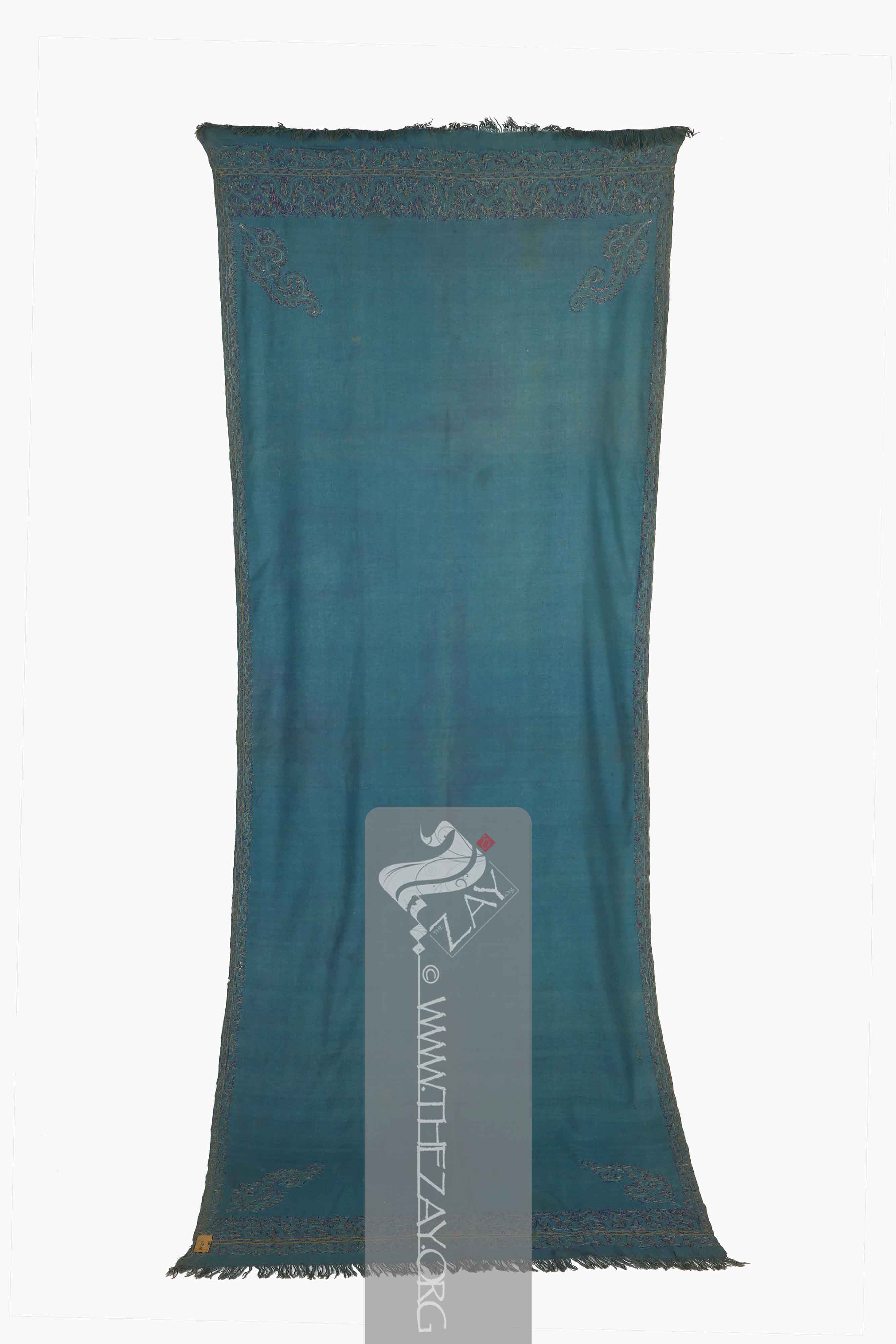
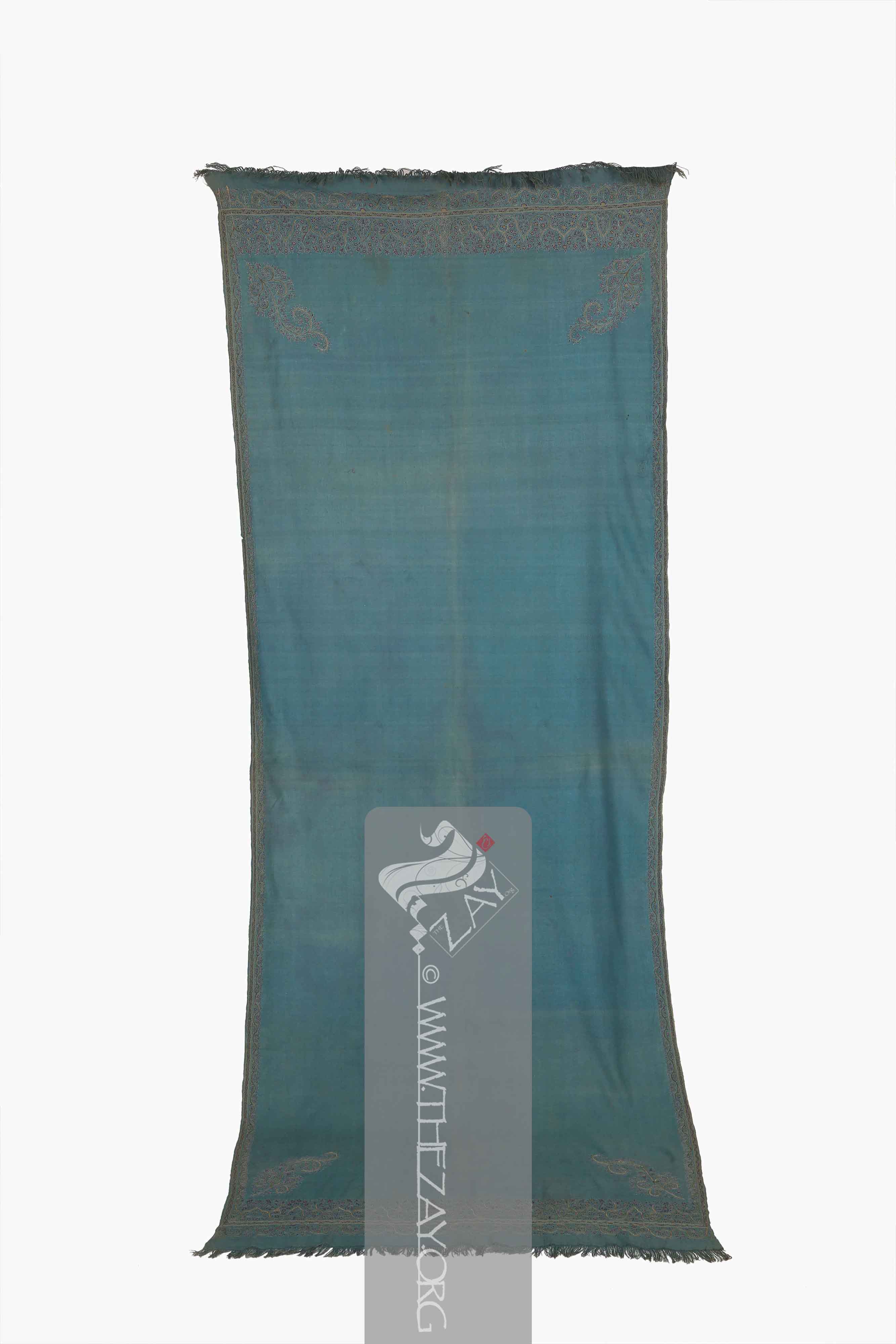
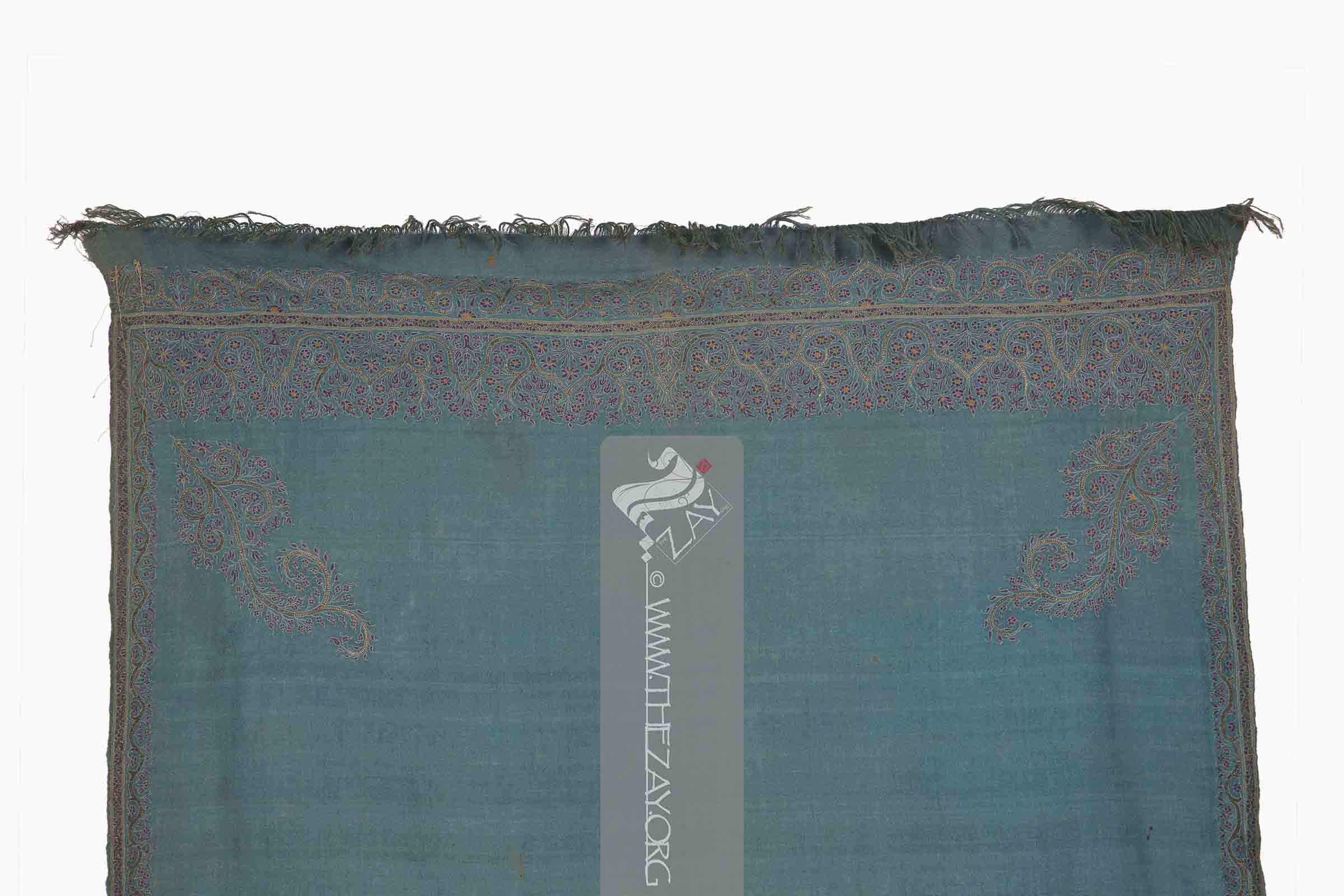

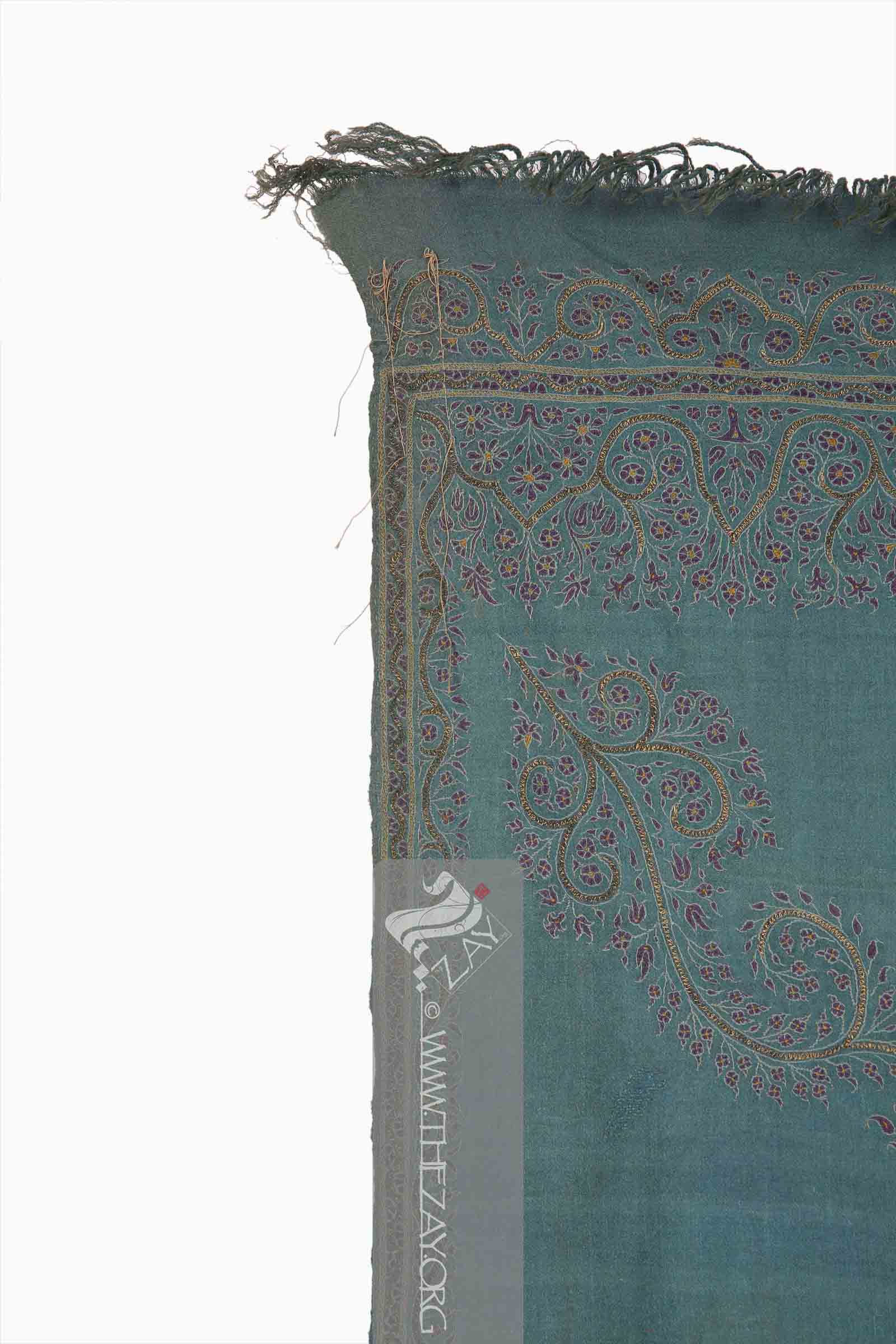
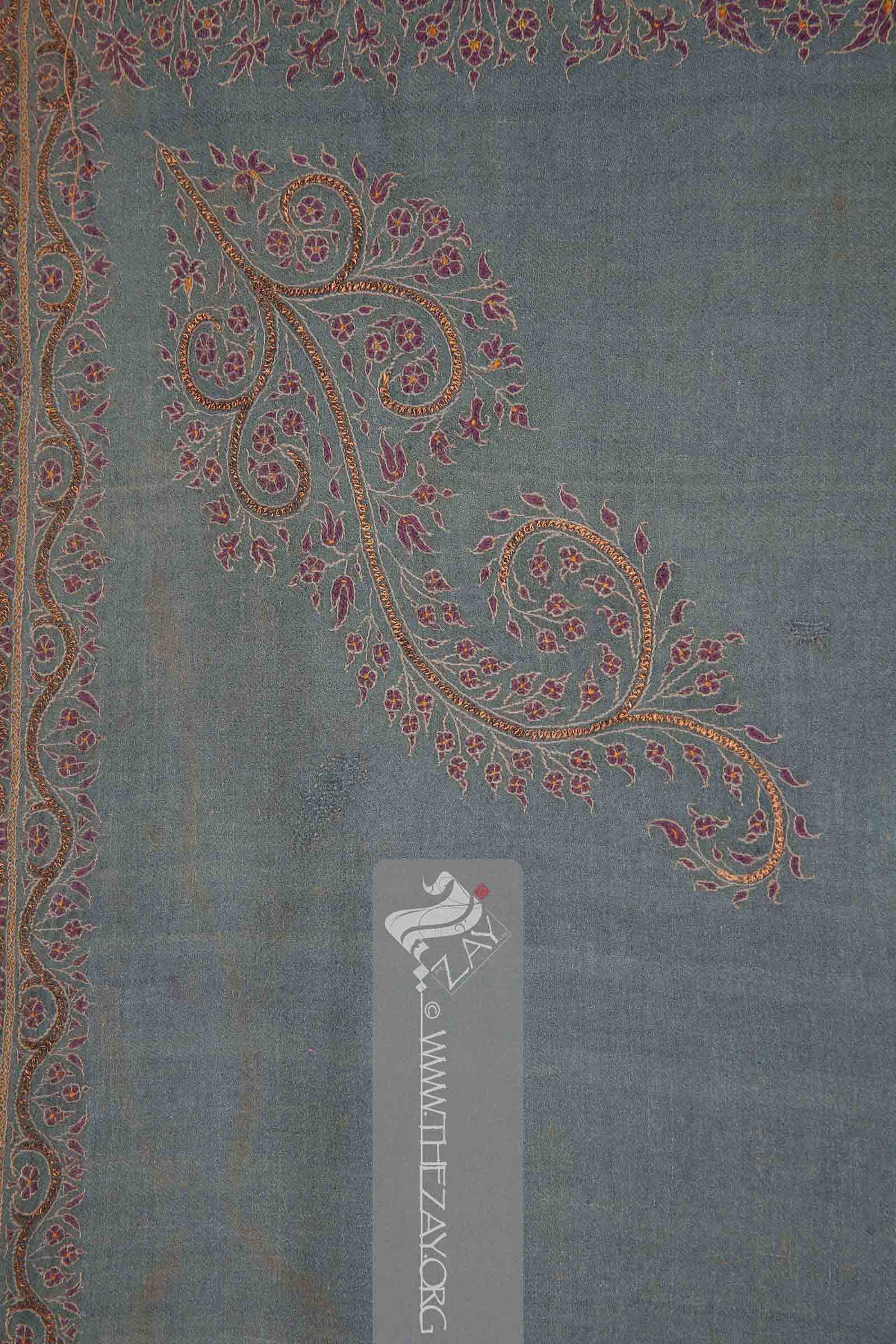
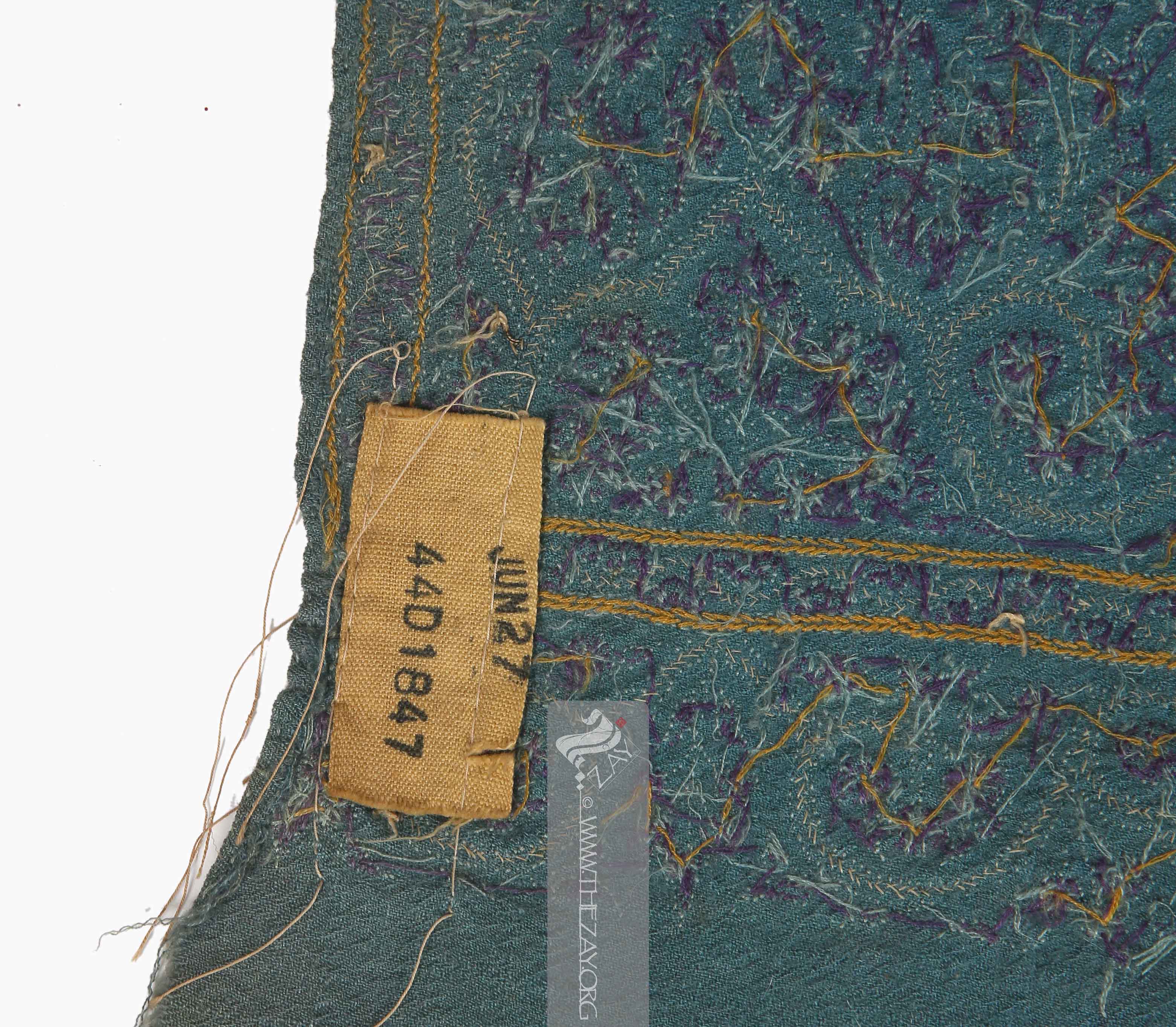
| Local Name | Kashmiri Pashmina Shawl |
| Object Category | Accessory |
| Gender | Unisex |
| Date of object | circa 19th Century |
| Place Of orgin | Asia |
| Region | Kashmir |
| Object Range | India, Pakistan, Afghanistan, Iran |
| Dimensions | Length: 200 cm Width: 100 cm |
| Materials | Wool |
| Technique | Hand Embroidered Woven |
| Color | |
| Motif | Arabesque Floral |
| Provenance | Purchased, Kerry Taylor Auctions, 2015 |
| Location | The Zay Zay: (Arabic: costume, Pl. azyaā’), a set of clothes in a style typical of a particular country or historical period. Initiative |
| Status | In storage |
| ZI number | ZI2020.500786 ASIA |
Couching: (Latin: collocare – Place together), in needlework and embroidery couching is a technique in which yarn or other materials are laid across the surface of the ground fabric and fastened in place with small stitches of the same or a different yarn
on a vibrant turquoise Turquoise: (French: turquois – present day Türkiye; Synonyms: firuze, pheroza), is a naturally occurring opaque mineral mined in abundance in Khorasan province of Iran and has been used for making dye for centuries. The term is a derivative of the French word for the country Türkiye once called Turkey. (pheroza Pheroza: (Persian: pērōzah – "victory", later Arabic: fayrūz; Synonyms: firuze, turquoise Turquoise: (French: turquois – present day Türkiye; Synonyms: firuze, pheroza), is a naturally occurring opaque mineral mined in abundance in Khorasan province of Iran and has been used for making dye for centuries. The term is a derivative of the French word for the country Türkiye once called Turkey. ), is a naturally occurring opaque mineral mined in abundance in Khorasan province of Iran and has been used for making dye for centuries. ) base, the fabric has minimal, yet intricate stylised floral designs embroidered in gold and violet. The body of the fabric is plain, except for the ornamental arabesque designs in the four corners that mirror each other and a thin arabesque border running along the inner edge of the fabric. The underside has a small rectangular piece of canvas stitched near one of the corners with a stamp reading “JUNE 27 44D1847” probably the date of acquisition and accession number by one of its previous collectors – possibly Dr Joan Coleman.